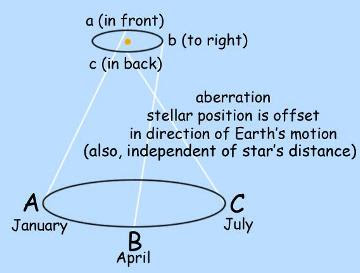
Stellar aberration is an astronomical phenomenon of an apparent motion of celestial objects about their real locations upon observation in a telescope, discovered by James Bradley in 1729, who attributed it to the finite speed of light and the motion of Earth in its orbit around the Sun.
On the other hand the two stars of a binary star orbiting each other do not give rise to any aberration; they appear in the telescope as one star. This poses a serious difficulty for Einstein's relativity theory in which the there would be no difference between the case of a moving telescope and the case of a moving star.
In Many-Minds Relativity (or Many-Aethers Relativity) there is a natural explanation of the observed phenomena of telescopic stellar aberration which connects to Bradley's original explanation. In Many-Aethers Relativity a Star being observed and the Sun interact by electromagnetic waves described by Maxwell's equations in a coordinate system fixed to the Star and the Sun. The Earth moves in this coordinate system, which thus acts as a fixed reference coordinate system, and the motion of the Earth gives rise to an effect of aberration, just like that encountered when moving through wind or rain.
Many-Aethers Relativity thus allows a preferred reference frame to be defined by the major actors (Star and Sun) establishing the coordinate system for Maxwell's equations. The same coordinate system would be defined by a binary star, because the distance between the binary star and Sun is so large. In this coordinate system the Star would be fixed and the Earth would be moving which would explain the different observations of (i) stellar aberration and (i) binary star without aberration.
In Einstein's relativity there is no preferred reference frame and no Aether, and the different observations of (i) and (ii) appear contradictory.
Another nail in the Einstein coffin.




In my opinion, the preferred reference frame of the Sun rotates around the Sun. This can be deducted from how the aberration for the planets is working out.
SvaraRaderaI believe there are good reasons to state that the effect of Annual aberration can’t occur near the observer on Earth. If we look at a star (in the direction of its apparent position) that is razing the border of the Moon, the actual position of that star may be well beyond the border of the Moon: so light from the star must be following the direction of the apparent direction during its journey from the Moon to the Earth. This implies that the change in direction (from actual to apparent) must have occurred earlier.
I included my thoughts in “The curvature of light due to relativistic aberration”
http://www.gsjournal.net/Science-Journals/Essays/View/4332